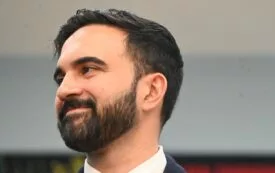As the political landscape in New York City evolves, one of the most pressing challenges that Mayor Zohran Mamdani will face is the reform of the New York Police Department (NYPD). The issue of policing is not only pivotal to the administration’s success but also to the broader community’s trust and safety. With a history marked by allegations of excessive force and systemic issues, the NYPD’s culture of impunity must be addressed head-on. Here are some concrete steps that Mamdani can take to initiate meaningful reform.
First and foremost, establishing a transparent accountability system is essential. This could involve the creation of an independent oversight board that has the authority to investigate complaints against police officers. Such a board would not only foster transparency but also restore public trust in the police force. By ensuring that officers are held accountable for their actions, Mamdani can begin to dismantle the culture that allows misconduct to go unchecked.
Another critical area for reform is the implementation of comprehensive training programs focused on de-escalation techniques and community engagement. By equipping officers with the skills to handle tense situations without resorting to force, Mamdani can help reduce incidents of violence and improve relationships between the police and the communities they serve. This training should be mandatory and regularly updated to reflect best practices and evolving community needs.
Mamdani should also prioritize the reallocation of police resources. Instead of funneling funds primarily into enforcement, a portion of the NYPD’s budget could be redirected towards community-based programs that address the root causes of crime. Investing in mental health services, housing assistance, and youth programs can lead to safer communities and lessen the reliance on police intervention.
In addition, the mayor can advocate for the decriminalization of certain low-level offenses, which disproportionately affect marginalized communities. By reducing the number of arrests for minor infractions, Mamdani can alleviate the burden on the justice system and prevent the criminalization of poverty. This approach not only promotes fairness but also allows the police to focus their resources on more serious crimes.
Engaging with community leaders and activists is another vital step in fostering a collaborative approach to policing. By listening to the concerns and suggestions of those most affected by police practices, Mamdani can implement reforms that are not only effective but also supported by the community. Town hall meetings and regular forums can serve as platforms for dialogue, ensuring that the voices of residents are heard and considered in the decision-making process.
Moreover, leveraging technology can play a significant role in promoting transparency and accountability. The use of body cameras, for instance, can provide crucial evidence in cases of alleged police misconduct. However, it is essential that strict policies are in place regarding the use and access to this footage to protect the privacy of both officers and citizens.
Finally, Mamdani should champion legislative changes at the state level that support police reform. Collaborating with lawmakers to advance bills that enhance police accountability, restrict the use of certain policing tactics, and promote community policing initiatives can create a more robust framework for reform.
In conclusion, the path to reforming the NYPD is fraught with challenges, but it is also filled with opportunities for positive change. By implementing a multifaceted approach that prioritizes accountability, community engagement, and resource reallocation, Mayor Zohran Mamdani can take significant strides toward creating a police force that serves and protects all New Yorkers equitably. The journey will require courage, commitment, and collaboration, but the potential for a safer, more just city is within reach.
